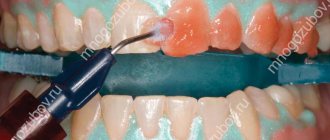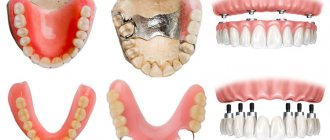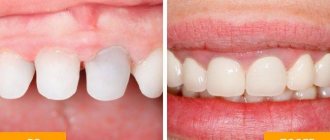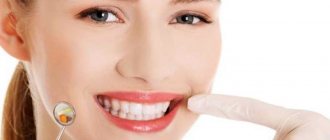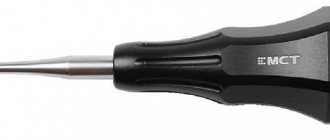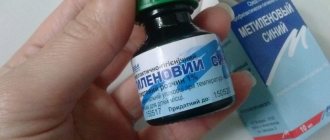Author of the article:
Soldatova Lyudmila Nikolaevna
Candidate of Medical Sciences, Professor of the Department of Clinical Dentistry of the St. Petersburg Medical and Social Institute, Chief Physician of the Alfa-Dent Dental Clinic, St. Petersburg
Remains of food in the oral cavity combine with enzymes in secreted saliva and partially remain on the teeth. These compounds interact with bacteria, dead cells and salts of certain trace elements. Gradually they harden and give the tooth enamel a yellowish tint - this indicates the appearance of plaque or tartar. It is localized in the most difficult to reach places - between the teeth and under the gums. The process of stone formation takes a long time - from several months to several years. The speed of its occurrence depends on the quality of food a person eats, the presence or absence of bad habits, etc.
To prevent tartar, you need to get rid of plaque on time. Asepta Active toothpaste copes well with this task. The natural enzyme papin, which is part of it, effectively breaks down plaque, without leaving it even in places that are difficult to reach with a brush.
Causes of the disease
The primary cause of the disease is improper oral hygiene or its complete absence. In addition to this factor, dentists identify a number of other reasons for the appearance of tartar:
- Wearing braces and other foreign structures in the oral cavity.
- Malocclusion.
- The habit of chewing food with only one side of the teeth.
- The predominance of soft foods in the daily diet.
- Disturbance of salt metabolism in the human body.
- The disease can occur as a result of complex dental treatment.
- Metabolic disease.
- The presence of rough surfaces in the oral cavity after the installation of a filling.
- Using a low-quality toothbrush and choosing the wrong toothpaste.
Symptoms and signs of the disease
Tartar happens:
- Subgingival.
- Supragingival.
Signs of supragingival calculus include yellow or dark brown formations on the walls of the tooth. The patient can independently detect them during a visual examination of the oral cavity in the mirror.
Subgingival formations are invisible at first glance. They are detected during an examination by a dentist using special diagnostic methods. Characterized by the following features:
- Density and hardness.
- Adjacent to tooth roots.
- They have a dark brown (closer to black) or dark green tint.
How to remove tartar?
Getting rid of tartar allows you to return the natural shade of tooth enamel, as well as prevent the occurrence of other dental diseases. There are several effective methods for removing tartar, and the choice of a specific one depends on what equipment the dental clinic to which the patient has applied has, on the amount he has, and on the recommendations of the treating dentist.
Stone removal is carried out using four main methods:
- Mechanical;
- Laser;
- Ultrasonic;
- Chemical.
Mechanical method
This method is practically not used in modern medicine. It is based on removing plaque using a set of special tools: spatulas and metal hooks (curette). With the help of these devices, stones were simply scraped off from the affected areas. Despite the effectiveness of the procedure, such cleaning was accompanied by bleeding and pain, and the tooth enamel was covered with small scratches.
Using a laser
The plaque that has formed on the enamel contains particles of moisture, which, under the influence of a medical laser, begins the process of peeling off the stones, destroying them from the inside. The advantage of this method is that the laser nozzle does not touch the tooth enamel, which minimizes the risk of damage. A powerful jet of water quickly removes remaining plaque from the oral cavity.
The duration of the procedure is about an hour. It allows you to achieve one hundred percent and lasting results. If you take proper care of your oral cavity.
Patients with tooth sensitivity may complain of slight bleeding during the process, as well as pain.
Ultrasound Applications
This process is based on the removal of formations using an ultrasonic scaler. This multifunctional device is equipped with a special nozzle, which is in the ultrasonic range. A stream of water is supplied through the scaler under pressure, which instantly removes stone particles.
Using this cleaning method, you can treat even the most difficult to reach areas. The plaque instantly peels off, and the surface of the teeth becomes perfectly clean. Minor discomfort that occurs during the brushing process is caused by strong water pressure on the tooth surface.
The ultrasonic cleaning procedure is carried out in several stages:
- If the patient has increased sensitivity to cold water, preliminary anesthesia is necessary.
- Using an ultrasonic tip, deposits are carefully removed above and below the gums.
- If the ultrasonic tip cannot clean some part of the interdental space, these areas are treated with abrasive strips.
- Remaining formations on the tooth surface are removed.
- Teeth are polished using special pastes and brushes.
- If the gums become inflamed during the treatment of stones with ultrasound, they are lubricated with a special anti-inflammatory agent.
- The enamel is treated with a strengthening varnish.
The attending physician gives effective recommendations for subsequent oral care.
Contraindications to the use of ultrasound:
- Diseases of the nasal cavity that lead to breathing problems.
- Presence of braces.
- Oncological diseases.
- Cardiovascular diseases.
- The patient has a pacemaker or implant.
- Epilepsy.
- Asthmatic diseases.
- Complicated form of diabetes mellitus.
- Viral infection in the patient's body.
The advantages of this method include the painlessness of the procedure, gentle treatment of tooth enamel and gum surface, as well as relatively low cost.
Chemical cleaning method
Dentists recommend this cleaning method only if there are any contraindications for mechanical or ultrasonic treatment. It is used among patients with high tooth mobility, as well as when the patient has a large number of fillings, implants or crowns.
This method of removing stones is based on softening them using a special chemical composition. Before the procedure, special protection is installed on the patient’s lips and gums to prevent chemicals from coming into contact with them. The product contains iodine, chloroform and hydrochloric acid. It is applied to the teeth for a short period of time (usually up to 60 seconds), after which it is washed off with water, and the softened stones are then cleaned off with special brushes. At the end of the procedure, a special coating is applied to the tooth enamel, which minimizes tooth sensitivity and prevents exposure to aggressive substances.
The chemical method is contraindicated for pregnant women, people with braces, patients who have sensitive tooth enamel, suffer from epileptic seizures, asthmatic attacks and difficulty nasal breathing.
The advantage of this method is the absolute painlessness of the procedure and the absence of noise during cleaning. In addition, after using chemicals, tooth enamel becomes several shades lighter. The disadvantage of this method is the aggressive effect of the substances used for cleaning on the surface of the teeth.
Air-Flow
This cleaning method is used as an auxiliary measure to get rid of the stone. Its use is also very effective in the unadvanced stage of the disease.
The Air-Flow device looks like an ultrasonic scaler. With its help, a suspension of special powder and water is supplied to the affected areas, which carries out the process of polishing tooth enamel. The powder has an abrasive and light bleaching effect. This cleaning allows you to return the natural color of tooth enamel.
How to remove tartar using traditional methods?
Folk remedies for removing tartar are aimed at softening it, after which it is supposed to painlessly remove soft particles using a toothbrush. For these purposes, use a decoction of walnut bark, radish with lemon, and citric acid with soda.
Traditional methods, as a rule, have only a short-term effect. It is worth remembering that self-treatment will not only not help get rid of the stone forever, but may worsen the situation. All procedures should be carried out only after consultation with your doctor.
What kind of remedy is this?
If ultrasound or mechanical teeth cleaning are contraindicated, a chemical method is used . Modern means of chemical treatment include Scaling gel. It is an alternative method if it is not possible to use medical instruments to remove hard deposits from teeth.
The drug is used to clean teeth of unnecessary stones in adults and to dissolve greenish plaque in children.
The effect of this dental gel is based on the fact that it is able to soften the hard tissue of dental plaque , which subsequently dissolves. The tooth enamel remains intact.
The drug consists of special particles that, when applied to teeth, stain damaged tissue. This makes diagnosis easier.
The dental product, in addition to all of the above, has good whitening properties. This effect can persist in patients with constant oral hygiene for about three months. The drug is very easy to use and has a very affordable price.
The drug contains the following components:
- silica;
- distilled water;
- iodine-containing substance “potassium iodide”;
- hydrochloric acid;
- polyhydric alcohols;
- special thickener;
Care after tartar removal
Application of polishing
The formation of tartar can be a consequence of complex dental treatment. The reason why this happens is the formation of unnatural roughness on the surface of the teeth as a result of filling or accidental damage to the enamel, which becomes an environment for the rapid proliferation of bacteria. Plaque begins to accumulate in these places, and over time, stones form. Polishing is used to restore the natural smoothness of the enamel.
After removing the stones, each tooth is treated with a special paste, which is evenly distributed over all surfaces of the teeth using a special soft brush. Immediately after the procedure, the smoothness of the enamel becomes noticeable. Polishing reduces the negative impact of external factors on teeth.
Use of fluoridation
The fluoridation procedure involves applying a fluoride-containing varnish to the surface of the teeth. Dentists advise combining this method with polishing to achieve maximum effect.
Mode of application
- At the initial stage of the procedure for cleaning tartar, it is necessary to prevent the substance from getting on the gums.
- Then one of the syringes with the contents of the gel is taken from the package and the cap is removed from the instrument. A metal cannula, called an applicator, is placed on the syringe.
- Using applied force, the gel is squeezed onto the affected area with hard dental plaque that requires treatment. The product should be left to act on tartar for 35-40 seconds.
- Then the gel is removed from the surface to be treated with special tools and thoroughly washed with water.
- After the cleaning process, you need to remove the cannula from the syringe and close the instrument with a special cap.
In particularly difficult cases, it is recommended to perform dental procedures several times to achieve the desired effect. At the same time, do not forget to always protect the gums from getting the gel on it.
It must be remembered that Scaling gel is used exclusively in medical clinics. Do not use the drug at home.
You should know that after the plaque cleaning procedure, it is important to carefully follow strict oral care recommendations . They should include daily (morning and evening) brushing of teeth, gums and tongue, as one of the sources of decomposition of various microorganisms.
There is no need to be overzealous with eating foods that are colored or contain a lot of carbohydrates. This can leave pigmentation on the enamel and promote bacterial deposits. If, after scaling, bad breath appears again after several months, you must repeat this stone removal procedure again.
Prevention of tartar
Basic recommendations that must be followed to prevent the appearance of tartar:
- Pay attention to regular brushing of your teeth. Buy high-quality toothpaste and replace your old brush with a new one once every three months.
- Review your daily diet. Add the maximum amount of vitamins and fruits to it, limit the amount of sweets and carbonated drinks with dyes consumed.
- Stop smoking - it contributes to the appearance of plaque and provokes the formation of stones.
- Try to drink coffee less often.
- Rinse your mouth with water after eating.
- Limit your consumption of alcoholic beverages.
- If the problem of stone formation occurs regularly, make it a rule to rinse your teeth with a special antiseptic every night before going to bed. The ingredients included in its composition prevent the growth of bacteria in the oral cavity and slow down the process of stone formation. If you cannot choose a remedy yourself, consult your doctor.
- Inspect your tooth enamel in the mirror often - stones are easy to spot by visual inspection.
- Do not overuse whitening toothpastes or professional teeth whitening. These processes will not eliminate the re-formation of stone, but will thin the tooth enamel and lead to damage to the teeth.
Visit your dentist regularly to remove existing stones in a timely manner and reduce the risk of caries. Regular examination and removal of plaque on teeth using modern equipment will help maintain the natural whiteness of teeth.
ASEPTA PLUS Remineralization professional toothpaste will be an effective assistant in the fight for snow-white, healthy teeth. The paste restores tooth enamel, reduces the increased sensitivity of teeth and gums and accelerates the regeneration of the oral mucosa.
The paste increases the resistance of teeth to the formation of caries, and high concentrations of hydroxyapatite and thermal mud help strengthen teeth and gums and reduce hypersensitivity.
Contraindications
Contraindications include intolerance to any individual component included in the dental gel. For example, an allergic reaction to potassium iodides. And also contraindications common to all cleaning methods:
- infectious processes occurring in the gums;
- acute respiratory viral infections;
- special sensitivity of tooth enamel or damage to it;
- pregnancy in the last months.
All of the listed contraindications can be eliminated or adjusted.
Clinical researches
Clinical studies have proven that regular use of professional toothpaste ASEPTA REMINERALIZATION improved the condition of the enamel by 64% and reduced tooth sensitivity by 66% after just 4 weeks.
Sources:
- Report on determining/confirming the preventive properties of toothpaste “ASEPTA PLUS” GENTLE WHITENING” Author: doctor-researcher A.A. Leontyev, head Department of Preventive Dentistry, Doctor of Medical Sciences, Professor S.B. Ulitovsky First St. Petersburg State Medical University named after. acad. I.P. Pavlova, Department of Preventive Dentistry
- Clinical and laboratory assessment of the influence of domestic therapeutic and prophylactic toothpaste based on plant extracts on the condition of the oral cavity in patients with simple marginal gingivitis. Doctor of Medical Sciences, Professor Elovikova T.M.1, Candidate of Chemical Sciences, Associate Professor Ermishina E.Yu. 2, Doctor of Technical Sciences Associate Professor Belokonova N.A. 2 Department of Therapeutic Dentistry USMU1, Department of General Chemistry USMU2
- Report on the determination/confirmation of the preventive properties of personal oral hygiene products “ASEPTA PLUS” Remineralization doctor-researcher A.A. Leontyev, head Department of Preventive Dentistry, Doctor of Medical Sciences, Professor S.B. Ulitovsky First St. Petersburg State Medical University named after. acad. I.P. Pavlova, Department of Preventive Dentistry
- Clinical studies of antisensitive toothpaste “Asepta Sensitive” (A.A. Leontyev, O.V. Kalinina, S.B. Ulitovsky) A.A. LEONTIEV, dentist O.V. KALININA, dentist S.B. ULITOVSKY, Doctor of Medical Sciences, Prof. Department of Therapeutic Dentistry, St. Petersburg State Medical University named after. acad. I.P. Pavlova
- The role of anti-inflammatory rinse in the treatment of periodontal diseases (L.Yu. Orekhova, A.A. Leontyev, S.B. Ulitovsky) L.Yu. OREKHOVA, Doctor of Medical Sciences, Prof., Head of Department; A.A. LEONTIEV, dentist; S.B. ULITOVSKY, Doctor of Medical Sciences, Prof. Department of Therapeutic Dentistry of St. Petersburg State Medical University named after. acad. I. P. Pavlova
- Report on determining/confirming the preventive properties of toothpaste “ASEPTA PLUS” COFFEE and TOBACCO Author: doctor-researcher A.A. Leontyev, head Department of Preventive Dentistry, Doctor of Medical Sciences, Professor S.B. Ulitovsky. First St. Petersburg State Medical University named after. acad. I.P. Pavlova, Department of Preventive Dentistry
- Report on determining/confirming the preventive properties of commercially produced personal oral hygiene products: Asepta toothpaste used in combination with Asepta mouthwash and Asepta gum balm Head. Department of PFS Doctor of Medical Sciences Professor S.B. Ulitovsky St. Petersburg State Medical University named after Academician I.P. Pavlova. Faculty of Dentistry. Department of Preventive Dentistry.


